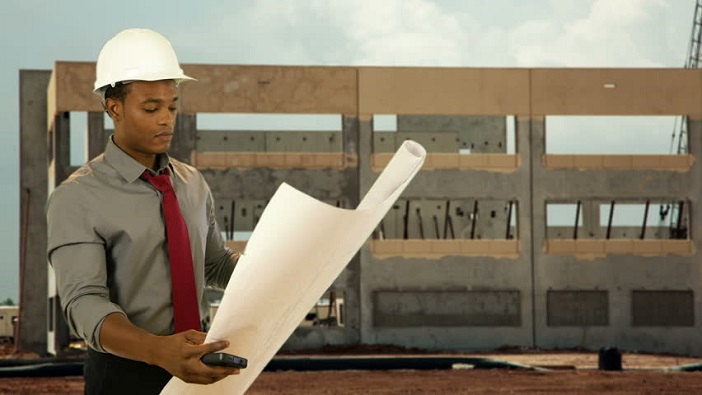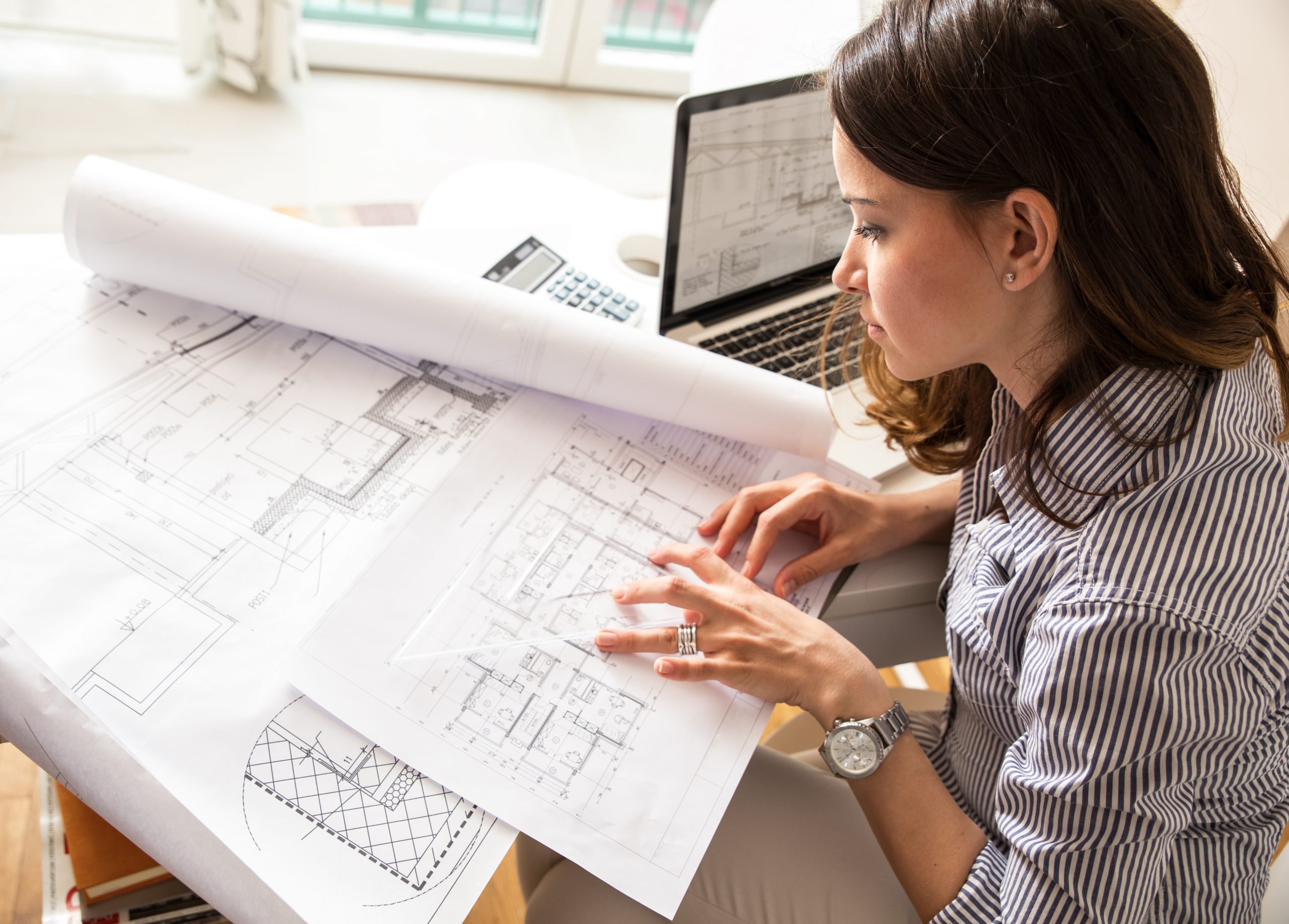Architect Firm Branding Strategies That Actually Work
Architect Firm Branding Strategies That Actually Work
Blog Article
Recognizing the Diverse Profession Paths Available for Aspiring Architect
As a hopeful Architect, you have a world of job courses waiting for you. Whether you're drawn to standard style or the subtleties of sustainable layout, there's a specific niche that straightens with your interests.
Typical Architecture: Designing Buildings and Frameworks
Typical design concentrates on designing structures and structures that mix functionality with aesthetic allure. As you discover this field, you'll appreciate the complex balance in between form and purpose. You'll learn to draw inspiration from historic designs, including elements like balance, products, and workmanship. Your layouts can reflect cultural heritage, showcasing neighborhood customs while fulfilling modern needs.
You'll establish skills in drafting, model-making, and website evaluation, enabling you to picture and interact your ideas properly. Engaging with clients, you'll need to comprehend their vision and convert it right into practical styles.
In addition, constructing codes and sustainability techniques are important in your work, ensuring your structures are secure and environmentally friendly. As you grow in your profession, you'll locate chances in household, business, and even reconstruction projects, each offering distinct difficulties. Welcoming typical design paves the way for a fulfilling job that admires the past while shaping the future.
Urban Preparation: Shaping Areas and Public Spaces
As an ambitious Architect, you can play an important function as an urban organizer, changing how neighborhoods connect and function. By utilizing area engagement techniques, you'll assure that citizens have a voice fit their setting. And also, integrating lasting design principles will aid produce spaces that not just satisfy today's requirements but likewise shield the future.
Role of Urban Planners
While numerous could believe of engineers as the single visionaries behind structures, city organizers play a necessary duty in shaping the wider landscape of neighborhoods and public spaces. By teaming up with various stakeholders, you'll aid create parks, transportation systems, and household locations that advertise social communication and ease of access. Your competence in spatial style and area characteristics permits you to picture future development while maintaining cultural heritage.
Area Involvement Methods
Effective community involvement methods are important for urban coordinators to guarantee that the voices of residents are listened to and valued in the planning procedure. To promote meaningful discussion, you must prioritize open discussion forums and workshops where community members can share their ideas and problems. Use surveys and social networks to get to a wider audience, ensuring varied point of views are consisted of. Working together with local organizations can boost depend on and facilitate much deeper connections. It is very important to give clear info concerning proposed jobs and decision-making processes, enabling residents to really feel educated and encouraged. By actively listening and integrating responses, you'll create areas that reflect the community's requirements, inevitably resulting in even more lasting and effective urban atmospheres. Embrace openness and continuous dialogue for enduring influence.
Sustainable Layout Principles
When making city rooms, including lasting design principles is essential for developing settings that flourish both environmentally and socially. You need to begin by concentrating on energy effectiveness, utilizing materials that decrease waste and promote recycling. Think about incorporating environment-friendly rooms, like gardens and parks, to enhance biodiversity and boost air top quality. Promoting walkability and public transport can minimize dependence on cars and trucks, cultivating a much healthier community.
Designing with water preservation in mind is likewise key-- think of rain yards and permeable surfaces to handle stormwater. Entailing neighborhood participants during the planning process warranties that the areas you create satisfy their needs and encourage social communication. By accepting these concepts, you'll add to vivid, lasting urban landscapes that profit everyone.

Landscape Design: Producing Sustainable Exterior Atmospheres
As you check out landscape architecture, you'll find necessary style principles that create gorgeous and useful outdoor areas. Sustainable techniques play a crucial role in making certain these settings grow while decreasing environmental effect. Plus, you'll locate a range of occupation opportunities that permit you to make a genuine distinction in exactly how individuals communicate with nature.
Layout Principles in Landscape
Understanding style principles in landscape design is important for developing sustainable outdoor settings that balance with nature. You'll require to contemplate aspects like percentage, scale, and balance to assure your designs really feel cohesive and inviting. Integrating indigenous plants not only improves biodiversity yet also lowers water usage, making your landscape durable. Consider the flow of area and just how people communicate with it; paths and seating locations ought to invite exploration and relaxation. In addition, pay interest to seasonal changes, creating with products that enhance the surroundings year-round (Architect). By prioritizing sustainability and aesthetic appeals, you can develop outdoor rooms that enhance the community and advertise wellness. Accepting these concepts will certainly establish a solid structure for your career in landscape design.
Sustainable Practices Summary
Sustainable techniques in landscape style not only concentrate on appearances yet likewise focus on eco-friendly health and resource preservation. You can create rooms that promote soil health and wellness, such as making use of organic products and practicing permaculture concepts. Eventually, these techniques assure your designs benefit both people and the setting for years to come.
Career Opportunities Exploration
With a solid structure in sustainable practices, landscape design offers a variety of profession paths that allow you to make a significant influence on the setting. Urban organizers often collaborate with landscape designers to produce eco-friendly spaces in city settings, boosting city livability. If you're enthusiastic about education, think about ending up being a landscape design teacher, inspiring future generations.
Sustainable Layout: Concentrating on Eco-Friendly Practices
As you explore your job in design, accepting environment-friendly methods can set you apart in an affordable field. Sustainable design concentrates on producing structures that reduce environmental effect while boosting passenger wellness. By incorporating eco-friendly materials, energy-efficient systems, and lasting structure methods, you'll add to a greener future.
Start by acquiring expertise of environment-friendly accreditations like LEED or BREEAM, which can bolster your credentials. Take into consideration how all-natural light, ventilation, and thermal effectiveness can optimize layout. Team up with designers and ecological experts to introduce solutions that reduce waste and conserve resources.
Do not forget the importance of area involvement-- interesting neighborhood stakeholders can motivate layouts that integrate with the environment. As clients progressively prioritize sustainability, your expertise in environmentally friendly practices will certainly not just attract projects however likewise satisfy your enthusiasm for responsible style. Accept this essential element of the career, and view your occupation thrive.
Historic Conservation: Shielding and Recovering Cultural Heritage
While you start on your building trip, consider the important function of historic preservation in maintaining our social heritage. This field concentrates on the defense and repair of significant buildings, websites, and frameworks that tell the stories of our past. By participating in historical preservation, you'll help guard the architectural heritage that forms neighborhood identification.
As a historic conservation Architect, you'll analyze historical relevance and assess the problem of frameworks. You'll function closely with conservationists and historians to ensure genuine reconstruction methods are utilized. This career path permits you to mix imagination with research study, allowing you to make solutions that respect original materials and workmanship.
Your work not only adds to sustainability by reusing existing structures however likewise fosters a sense of pride within communities. Accepting this course will assist you become a guardian of history, preserving the stories and looks that he has a good point enhance our lives.
Inside Architecture: Enhancing Indoor Spaces
Historic preservation and indoor style both share a dedication to improving the constructed atmosphere, but they concentrate on different aspects. While historic conservation stresses keeping a framework's historical and social value, interior architecture nos in on optimizing indoor spaces for capability and aesthetic appeals.
As an aspiring Architect, you'll discover that interior architecture enables you to blend imagination with technical abilities. You'll make rooms that not just look excellent but also promote convenience and efficiency. This field includes understanding just how light, shade, and products communicate within a space, affecting state of mind and functionality.
You'll service different jobs, from property homes to business workplaces, guaranteeing that each atmosphere satisfies the requirements of its residents. By prioritizing individual experience, you can change insides into inspiring and functional areas, making a substantial effect on just how individuals engage with their surroundings. Embrace the opportunity to boost indoor settings and form the means individuals work and live.
Industrial Style: Combining Capability With Visual Appeals
Industrial design plays an important role in developing items that effortlessly blend aesthetics with functionality, making certain that what you use daily is not just aesthetically appealing yet additionally useful. As an ambitious Architect, you can engage yourself in this area, concentrating on making every little thing from furniture to customer electronic devices. Your work includes comprehending user requirements, materials, and making processes, enabling you to produce cutting-edge options that enhance day-to-day experiences.
In industrial layout, you'll frequently team up with online marketers, makers, and engineers, making sure that your designs are not just stunning but likewise practical. You'll learn to balance type and function, focusing on use without compromising style. By refining your abilities in sketching, 3D modeling, and prototyping, you'll be fully equipped to bring your concepts to life. This career course offers a dynamic atmosphere where creative thinking meets practicality, making it a rewarding option for engineers thinking about shaping the products of tomorrow.
Regularly Asked Inquiries
What Educational Accreditations Do I Need to Become an Engineer?
To end up being an architect, you'll need an expert degree in architecture, commonly a Bachelor's or Master's. In addition, you'll have to finish an internship and pass the Architect Enrollment Evaluation to exercise lawfully.
Exist Qualification Demands for Different Building Occupation Paths?
Yes, there're qualification demands for different architectural paths. Architect. You'll need to pass tests, total internships, and occasionally go after specialized training, depending on your selected focus, like landscape architecture, urban design, or historic preservation
What Software Program Skills Are Essential for Designers Today?

Exactly How Can I Gain Practical Experience While Studying Design?
You can acquire practical experience by interning at building firms, getting involved in style competitions, volunteering for area jobs, or collaborating with schoolmates on real-world projects. These possibilities improve your skills and find more information construct useful links in the market.
What Work Opportunities Exist Outside Typical Design Firms?
You can check out different work possibilities outside standard design companies, like urban preparation, indoor style, landscape style, building monitoring, genuine estate development, and even duties in sustainability consulting. Each offers special challenges and benefits.
Whether you're attracted to conventional style or the subtleties of sustainable style, there's a niche that lines up with your rate of interests.When designing metropolitan rooms, incorporating sustainable style concepts check this is crucial for creating settings that thrive both environmentally and socially.As you discover landscape design, you'll discover necessary layout principles that create lovely and useful outside spaces.Comprehending style principles in landscape style is important for creating sustainable outdoor atmospheres that integrate with nature.In commercial layout, you'll usually work together with online marketers, manufacturers, and designers, making certain that your styles are not only lovely however additionally viable.
Report this page